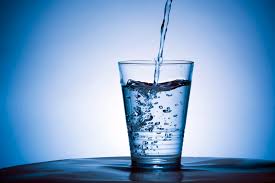
Breaking News
6.5x55 Swedish vs. 6.5 Creedmoor: The New 6.5mm Hotness
Best 7mm PRC Ammo: Hunting and Long-Distance Target Shooting
 Christmas Truce of 1914, World War I - For Sharing, For Peace
Christmas Truce of 1914, World War I - For Sharing, For Peace
Top Tech News
 EngineAI T800: Born to Disrupt! #EngineAI #robotics #newtechnology #newproduct
EngineAI T800: Born to Disrupt! #EngineAI #robotics #newtechnology #newproduct
 This Silicon Anode Breakthrough Could Mark A Turning Point For EV Batteries [Update]
This Silicon Anode Breakthrough Could Mark A Turning Point For EV Batteries [Update]
 Travel gadget promises to dry and iron your clothes – totally hands-free
Travel gadget promises to dry and iron your clothes – totally hands-free
 Perfect Aircrete, Kitchen Ingredients.
Perfect Aircrete, Kitchen Ingredients.
 Futuristic pixel-raising display lets you feel what's onscreen
Futuristic pixel-raising display lets you feel what's onscreen
 Cutting-Edge Facility Generates Pure Water and Hydrogen Fuel from Seawater for Mere Pennies
Cutting-Edge Facility Generates Pure Water and Hydrogen Fuel from Seawater for Mere Pennies
 This tiny dev board is packed with features for ambitious makers
This tiny dev board is packed with features for ambitious makers
 Scientists Discover Gel to Regrow Tooth Enamel
Scientists Discover Gel to Regrow Tooth Enamel
 Vitamin C and Dandelion Root Killing Cancer Cells -- as Former CDC Director Calls for COVID-19...
Vitamin C and Dandelion Root Killing Cancer Cells -- as Former CDC Director Calls for COVID-19...
 Galactic Brain: US firm plans space-based data centers, power grid to challenge China
Galactic Brain: US firm plans space-based data centers, power grid to challenge China
How to disinfect water in a survival situation

(Natural News) Many people take clean running water for granted, but in the event of a hurricane, earthquake, or other survival situation, this is often the first thing to go — and the one thing you'll need to stay alive. Knowing how to disinfect water and make it safe for drinking can be a matter of life and death in an emergency, and thankfully, it can be easily done using common household items. Here are two water disinfection methods as recommended by the Environmental Protection Agency (EPA):
The household bleach method
This may seem counter-intuitive, even downright suicidal, but it is actually a legitimate way to get clean water for drinking, and ideal when you don't have access to heat. It is important to use only regular, unscented chlorine bleach labelled for disinfection and sanitation. Avoid scented or color-safe bleach, or those with additional cleaning properties. Also, the bleach must be stored at room temperature for less than a year, and contain 8.25 percent of sodium hypochlorite. To disinfect your water with bleach follow this procedure:
Before bleaching, run the water through a clean filter — you can use any clean cloth or fabric, paper towel, or a coffee filter.
From there, take a clean medicine dropper, and add the appropriate amount of bleach for the volume of water you are disinfecting. You should add two drops of bleach for every liter or quart of water. That is equivalent to six drops of bleach per gallon. The amount of bleach should be doubled if the water is cloudy, colored, or very cold.
Stir the bleach into the water and let it stand for 30 minutes. A slight chlorine smell is normal. If it doesn't have a chlorine odor, repeat the second step with the same amount of bleach, and let the mixture stand for another 15 minutes.
To get rid of the chlorine taste, transfer the water from one clean container to another and let it stand for a few hours before using it.
The boiling method
This is a more common method of disinfection, and, according to EPA can kill pathogenic bacteria, viruses, and protozoa. You will need a heat source and a container that can withstand it, though, so this method may not always be ideal in every situation. To disinfect water by boiling, follow these steps:
Run your water through a filter to get rid of any sediments and particles.
Let water reach a rolling boil, and keep it there for at least one minute. At higher altitudes (above 5,000 feet), let the water boil for three minutes.
Cool the water naturally and transfer to clean, covered containers for storing.
To improve the taste, add a pinch of salt for every liter or quart of water.
Other disinfection methods endorsed by the EPA include: tincture of iodine, water disinfection tablets, and the rather more complicated and riskier method of that uses granular calcium hypochlorite.
Where you get your water is as important as what you do to disinfect it. In an emergency situation, here are some water sources to consider, as recommended by the Centers for Disease Control and Prevention (CDC):

 The State's Last Stand
The State's Last Stand


